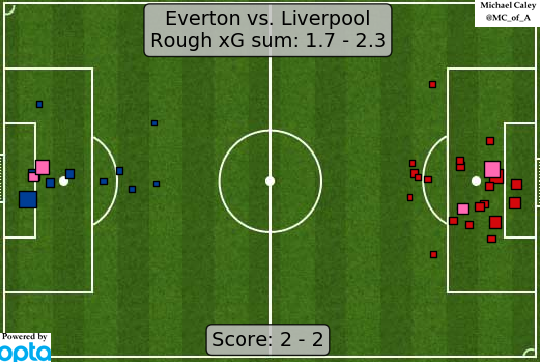I don't have to be able to recall them. You're the one posing the case for letting something go without looking at it with something better than a human eye (something I said to you before, our optics are useless at precise judgement, and we have better tools to do that) as if a player being ahead with a scoring part of their body is somehow not offside. Despite admitting offsides are binary.
If they're binary, you need to decide what means 'players are level'. If it means you have to investigate each case of apparent no-offside, it makes perfect sense to do if you're able to do it. Otherwise you're simply not doing your job.
-The fact that you cannot recall them supports my argument: you cannot recall them because that was never the issue until 2018.
-Being binary does not mean you need a precise machine to determine YES or NO. You want to obliterate human judgment, without having first assessed it's nature regarding offside law.
You are conflating 2 different aspects:
i) definition of the offside law.
ii) ability to implement it.
Precision has nothing to do with i), and everything to do with ii). The moment precision enters i) it means you are messing with what the offside law is.
Now with VAR and goal-line we have utmost optical precision.
The question now becomes on
towards what to direct that precision. And here is where people get confused, because they have not reflected properly on what i) exactly is.
And i) has inherently in it the
human understanding of 'ahead/behind/in-line' which is based on how the human eye sees.
If you want machine-precision in i), you are creating a new rule based on how a machine 'understands' ahead/behing/in-line.
[Now on a sidenote, I am not against determining scientifically how the human eye sees (although it needs a lot of work and consensus). And I have thought a bit on it (after realizing that's what infuriates people with the VAR offside calls), and I have come to the conclusions I have presented above: that the human eye judges by the position of the center of the body and looking at the body as a whole and not each and every part of it]
What I said in the first place (when I talked against pedantry) is that people thought 'now with VAR we need some directives on how to call them' which started the whole mess of impinging on i).
If that step was not taken, and referees were presented with all angles of paused replays with the criteria on how to judge
not being further determined, you would have a situation of having ii) without transgressing into i) at all.
And I am sure if referees were given the material without directives, they would have continued to judge like they were doing until 2018.
So, I am not saying 'not look at it'. I am saying look at it without the new directives, the way any referee was looking at it for ever until very recently.
It's not irrelevant. You're offside with a legal part of your body at the moment of the pass or you're not.
Can't loosen this up or you'll open the law to abuse and inconsistency. If the only inconsistency that we have right now is being able to see the hairs of one players vs the other's then that's still better than not looking for it at all which is what you're suggesting.
It is because you don't score the moment the ball is played, but many moments later.
Answer me this: Does legality (in regards to scoring) of parts of the body has anything to do with determining relative position of two runners?
I say it has nothing to do.
Offside is about determining the relative position of two runners against one another.


